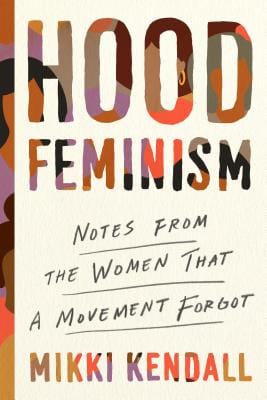Hood Feminism: Notes from the Women That a Movement Forgot
An 800-word review of Mikki Kendall's Hood Feminism that explains how the book challenges mainstream feminist narratives and centers the needs of marginalized women.

Introduction
When people think of feminism, images of historic marches, viral hashtags, and glass-ceiling metaphors often come to mind. Yet too many of those narratives center on the needs of already privileged women. Mikki Kendall’s 2020 collection, Hood Feminism: Notes from the Women That a Movement Forgot, flips the script. In a series of razor-sharp essays, Kendall argues that true gender equity cannot exist until food insecurity, housing, gun violence, and healthcare are treated as feminist issues. This 800-word review unpacks the book’s core arguments, why they still resonate, and how readers can translate its lessons into concrete action.
Who Is Mikki Kendall?
Mikki Kendall is an author, veteran, and longtime cultural commentator whose work has appeared in outlets such as The Washington Post, The Guardian, and Time. Growing up on Chicago’s South Side, Kendall experienced economic instability firsthand, later channeling those insights into her writing on race, gender, and media representation. Her viral Twitter hashtag #SolidarityIsForWhiteWomen gave voice to the frustrations of Black women sidelined in mainstream feminist spaces. Hood Feminism expands on that conversation, blending memoir, investigative journalism, and policy analysis to reveal how feminism often forgets the people who need it most.
What Is Hood Feminism About?
At its heart, the book is a demand for intersectionality in practice rather than theory. Kendall structures her essays around everyday crises—hunger, intimate-partner violence, education gaps, and more—to demonstrate that these are the front-line battles for millions of women of color and poor women. The text is purposely accessible, eschewing academic jargon in favor of plain-spoken urgency. Each chapter ends without tidy solutions, underscoring Kendall’s belief that progress requires collective responsibility rather than individual heroism. By highlighting systemic neglect, she reframes feminism as a fight for basic survival, not just boardroom parity.
Intersectionality in Practice
Many organizations claim to be intersectional, but Kendall shows how that commitment often vanishes when policies are drafted. She recounts moments when well-funded feminist nonprofits prioritized wage-gap panels over affordable child-care campaigns, sidelining women who cannot afford a babysitter to attend those panels. Intersectionality, Kendall argues, is less about identity checklists and more about resource allocation. If budgets do not address poverty, disability, or anti-Black racism, then those groups are merely decorative to the movement. The essay therefore calls on activists to examine whose voices shape agendas and whose lives benefit afterward.
Hunger and Food Justice
One of the book’s most powerful chapters focuses on hunger. Kendall, who once relied on public assistance, explains how access to nutritious food dictates everything from children’s test scores to adult life expectancy. She slams the stigma directed at mothers who use food stamps while praising volunteer-led community gardens that reclaim both land and dignity. In Kendall’s view, campaigns for equal pay ring hollow if their beneficiaries cannot afford breakfast. Declaring food security a feminist priority relocates the struggle from conference rooms to corner stores, where women often stretch dollars to feed multigenerational households.
Safety and Gun Violence
Kendall also tackles gun violence, a daily reality in many Black neighborhoods yet rarely framed as a feminist concern. She notes that women are both direct victims and collateral casualties when schools, streets, and even homes become battlegrounds. Traditional feminist self-defense workshops do little for mothers trying to keep children safe from stray bullets or abusive partners with easy firearm access. Kendall challenges activists to advocate for gun-reform laws, expanded mental-health services, and trauma-informed policing—policies that save women’s lives long before any assault begins.
Education and Representation
Representation matters, but Kendall warns against tokenism. She critiques pinkwashed marketing campaigns that spotlight one Black woman CEO while ignoring the underfunded public schools she once attended. Educational inequality, from dilapidated buildings to biased curricula, puts girls at a disadvantage before they ever enter the labor market. By linking classroom resources to feminist outcomes, Kendall broadens the definition of empowerment. Real representation, she argues, starts with ensuring every girl has books, safe facilities, and teachers who believe she belongs in advanced courses—long before she reaches the boardroom.
Why This Book Matters Now
Published just months before the global pandemic and renewed Black Lives Matter protests, Hood Feminism feels eerily prescient. COVID-19 exposed deep racial and economic rifts, with women of color overrepresented in essential, underpaid jobs. Simultaneously, national reckonings on police brutality highlighted the gendered dimensions of state violence. Kendall’s essays help readers connect these headlines to decades of policy failure. By centering the margins, she offers a roadmap for building coalitions that are both racially aware and class conscious, ensuring that future feminist victories leave no one behind.
Key Takeaways for Modern Feminists
First, listen to lived experience; data is crucial, but stories mobilize communities. Second, follow the money. Budgets reveal whether intersectionality is genuine. Third, redefine leadership to include organizers, caretakers, and survivors whose expertise stems from survival, not prestige. Fourth, embrace policy over performative gestures; a viral slogan is meaningless without votes that transform it into law. Finally, practice reciprocal solidarity. Supporting campaigns against police violence or housing discrimination is not charity but an investment in collective liberation.
Final Thoughts
Hood Feminism is not comfortable reading, nor is it meant to be. Kendall’s prose stings precisely because it is rooted in familiar realities we too often ignore. Yet the book is ultimately hopeful, offering a vision of feminism that is as practical as it is inclusive. Readers who finish these essays will find it difficult to return to a movement concerned solely with boardroom parity and social-media optics. Instead, they will be challenged to build a feminism robust enough to feed, shelter, and protect every woman—starting with those the movement once forgot.



